
Onsite visit to Copenhagen, Denmark
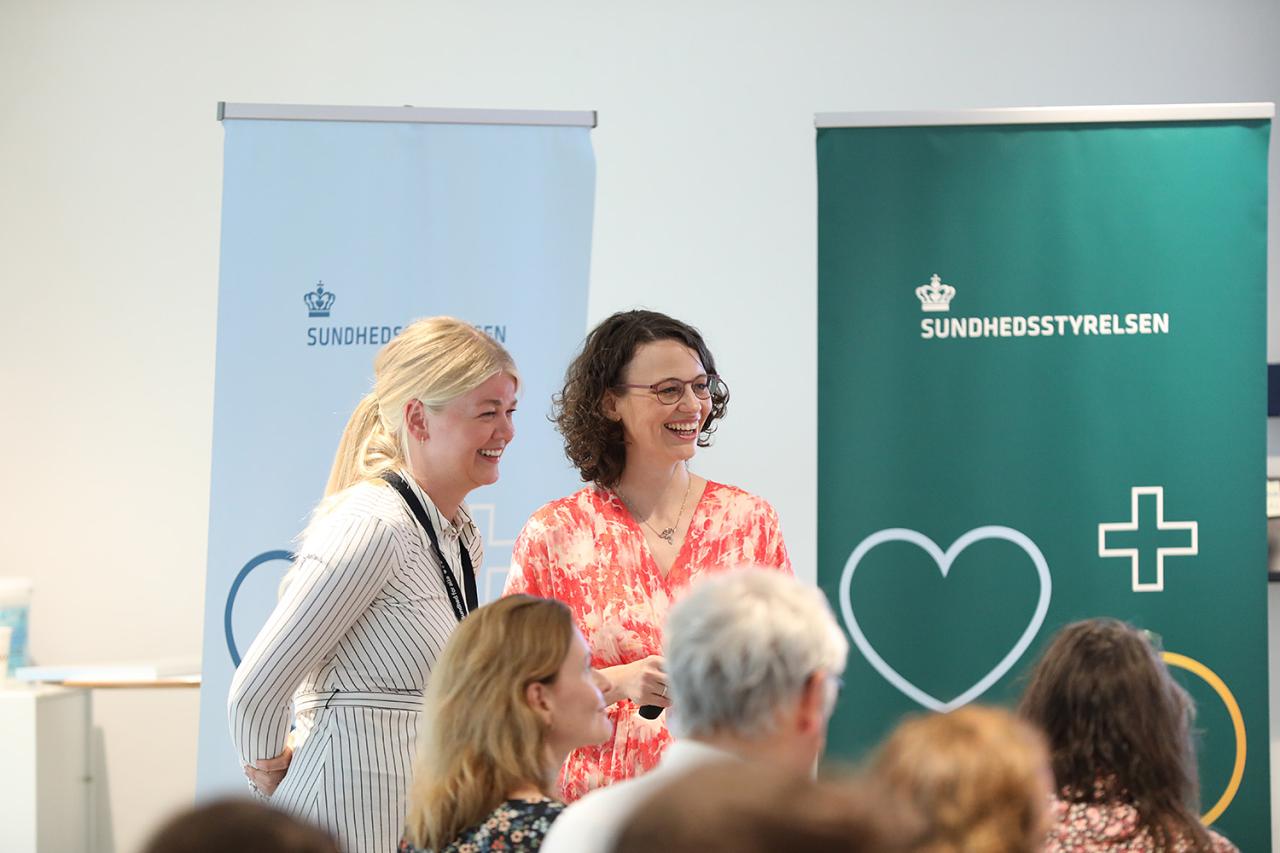
Introduction
The second onsite project visit took place in Copenhagen, Denmark, from 21 to 23 June 2023. The visit focused on the Danish health authorities’ exemplary practice “Communication initiatives including reminder schemes to support childhood immunisation” which include different initiatives to increase coverage and strengthen programme resilience, including reminder schemes, communication campaigns, and health visitors as vaccination ambassadors. The practice targets parents of children aged 3 months to 12 years and covers vaccines against diphtheria, tetanus, pertussis; Hib-bacteria, polio (DiTeKiPol-Hib) and pneumococcal disease and human papilloma virus (HPV); and measles, mumps and rubella (MMR).
The Danish Health Authority (Sundhedsstyrelsen) welcomed 28 participants from 16 different EU Member States in Copenhagen. Participants represented national health institutions, health ministries, and national immunisation offices. The goal of the visit was to:
- gather insights into the Danish Childhood Immunisation Programme and learn from its success
- foster mutual learning by exchanging knowledge and experiences
- develop ideas on how health professional from other Member States can transfer the practice to their countries
As part of the visit, the Danish health authorities were awarded a certificate of outstanding practice from the European Health and Digital Executive Agency (HaDEA).
Communication initiatives including reminder schemes to support childhood immunisation
Aim
There are no mandatory vaccinations in Denmark, yet the Vaccination Coverage Rate (VCR) is high for most vaccinations. The highest VCR is for the vaccine DiTeKiPol-Hib at 97%, above the World Health Organization (WHO) target of 95%. MMR also has a high VCR (94%) while the HPV vaccination rate is moderate (87% take-up for the first HPV vaccination) but above the EU VCR average of 77%. It is worth highlighting the high take-up rate for HPV vaccination among boys. This only became a permanent part of the child vaccination programme in 2019, but is now almost on a par with the rate among girls.
After a couple of years with low HPV coverage, significant efforts have brought marked improvements to HPV coverage rates among girls. The Danish Childhood Immunisation Programme aims at reducing the physical and administrative obstacles to vaccination in Denmark through campaigns, reminder schemes, and vaccination ambassadors.
Actors involved and implementation
Vaccination programmes play a fundamental part in promoting public health in Denmark. The Danish Childhood Immunisation Programme works with a variety of organisational frameworks. The Danish Health Authority (Sundhedsstyrelsen) has overall responsibility for the Danish Childhood Immunisation Programme and makes recommendations to the Danish Interior and Health Ministry as to which vaccines should be included. Statens Serum Institute are responsible for monitoring the programme and vaccine-preventable diseases in general. The Danish Medicines Agency, in cooperation with the European Medicines Agency (EMA), is responsible for the authorisation of vaccines used, as well as monitoring adverse effects and safety. When assessing new vaccines for the Childhood Immunisation Programme, the Danish Health Authority consults with its Vaccination Council. If the Danish Health Authority finds that a given vaccination should be introduced into the programme, the Agency puts forward a recommendation to the Danish Interior and Health Ministry, which has the decision-making power. Statens Serum Institut is responsible for ensuring the supply of vaccines to the programme. The Vaccination Council contributes with professional advice and experience about vaccination.
To strengthen the Danish Childhood Vaccination Programme, the Danish Health Authority launched an initiative to educate health visitors (home visiting nurses) to become vaccination ambassadors. Nurses play an important role as advisors and communicators in relation to children's health. The initiative provides training and develops the ambassador’s communication skills, enabling dialogue with parents about vaccination.
Resourcing
The vaccines in the Danish Childhood Vaccination Programme are easily accessible and free of charge. Some vaccines are reimbursed for some groups (risk groups). Women may be vaccinated against rubella free of charge if they have not been previously vaccinated, and all adults can be vaccinated against measles if they are not already immune through either infection or vaccination.
In the 2023/24 season, children aged 2-6 years are being offered flu vaccination free of charge.
Results
Every citizen’s vaccination status and related vaccine information is monitored using a vaccination registry (DDV). Vaccination adherence and effectiveness are monitored and assessed through the vaccination registry which also has data specifying gender, age groups, and geography. The monitoring system only covers the vaccines that are recommended or are part of the national vaccine programmes. It is mandatory to register all vaccinations in the Danish Vaccination Register (DDV).
Vaccination reminders are sent to parents 14 days before the recommended vaccination time. Vaccinations are typically administered by the family's general practitioner, in combination with routine health check-ups. If no vaccination is carried out, a reminder will be sent out 30 days after the child's recommended vaccination time. The Danish Health Authority recommends that children are vaccinated within the specified vaccination period. This ensures that each vaccine provides the child with maximum protection.
In 2017 the information awareness campaign Stop HPV was launched jointly by the Danish Health Authority, the Danish Cancer Society, and the Danish Medical Association. The initiative was to provide nuanced and evidence-based information about the HPV vaccine and increase immunisation coverage following a decline in uptake. The campaign was extended to include boys in 2019, meaning that boys, like girls, now receive the HPV vaccination free of charge if they were born in the latter half of 2007 or later. The campaign ended in late 2021 following the successful restoration of HPV immunisation coverage.
Vaccination ambassadors played a key role in reaching out to local communities through dialogue-based approaches to address concerns. Health visitors regularly meet the families and children in their districts and build up a strong level of trust. They work with pregnant women and visit new-borns multiple times at home during the first year of life. They meet the children again at kindergarten and school. Health visitors are able to address concerns in a trusting atmosphere and are in a perfect position to bring up the topic of vaccination. Approximately 200 health visitors were trained as vaccination ambassadors from 2019 to 2022 by experts from the Danish Health Authority. In a full day of training, they learned about the Childhood Vaccination Programme, diseases and vaccines, the Danish Vaccination Register, and good ways of communicating about vaccination. The Danish Health Authority equipped the vaccination ambassadors with information materials such as a handbook on vaccination, postcards, animation films and posters.
The Danish Health Authority has made progress in establishing easier access to vaccination, both geographically and digitally. For vulnerable and hard-to-reach groups, various initiatives have been put in place such as administering vaccines at shelters for the homeless as well as health care providers accompanying individuals to vaccination centres. Home vaccination is also available for people with mobility difficulties. To overcome language barriers, information about the programme has been translated into several languages (English, Arabic, Farsi, Polish, and Somali).
Outcomes of the visit
Participants attended five workshops designed to facilitate reflection and evaluation of the vaccination practice presented. Workshops explored the use of reminder schemes and of health visitors as vaccination ambassadors and included an “Impact Canvas” to guide participants in evaluating the potential transfer of the practice to their own local health system and infrastructure.
Participants identified several strengths including the digital national registry, reminder schemes, and the active role of the National Immunisation Technical Advisory Groups (NITAG). The use of health visitors as vaccination ambassadors was thought to increase trust among hard-to-reach groups. The personal relationship between the health visitor and the patient creates trust in the health system and has a positive impact on national vaccination coverage. The initiative benefits from multi-stakeholder collaboration, mobilising private actors and non-governmental organisations to support the health care system. Personal engagement facilitates a positive attitude towards vaccination and a greater awareness of diseases. For instance, ambassadors can function as role models to reduce vaccine hesitancy.
As part of the Impact Canvas, participants identified several key aspects of the Danish Childhood Immunisation Programme that could be adapted and transferred to other Member States. These include:
- National registry: a single registry which holds information about the vaccination status of every person in the country, which helps to simplify targeted outreach activities, as well as observation of VCRs.
- Electronic reminders: sending out reminders automatically to individuals saves administration time.
- Cross-institutional collaboration: experts from different institutions broaden the government’s perspective.
- Training nurses and midwives as ambassadors for vaccination, using the existing structures of care in family settings.
Participants collected ideas on potential changes which included:
- Modernisation: new developments in information technology such as artificial intelligence (AI) could be used to protect the national registry from cyber-attacks.
- Advancing functions: the Ministry of Health could link the national vaccination registry to other services (monitoring the health status of children, combining the registry with distribution systems).
Attendees gained new insights into the practice and shared their willingness to transfer the knowledge and experience obtained to their colleagues and institutions through visit reports, campaigns, actions, strategic planning, and submitting a proposal for a pilot project as part of the Overcoming Obstacles to Vaccination project.
Find out more about the Danish childhood vaccination programme:
Websites:
- The Danish Childhood Immunisation Programme 2022: www.sst.dk/en/english/publications/2023/the-danish-childhood-immunisation-programme-2022
- Vaccination against influenza and COVID-19: www.sst.dk/en/english
- Reminder schemes for childhood vaccination: https://en.ssi.dk/vaccination/the-danish-childhood-vaccination-programme/reminder-scheme-for-childhood-vaccination
-
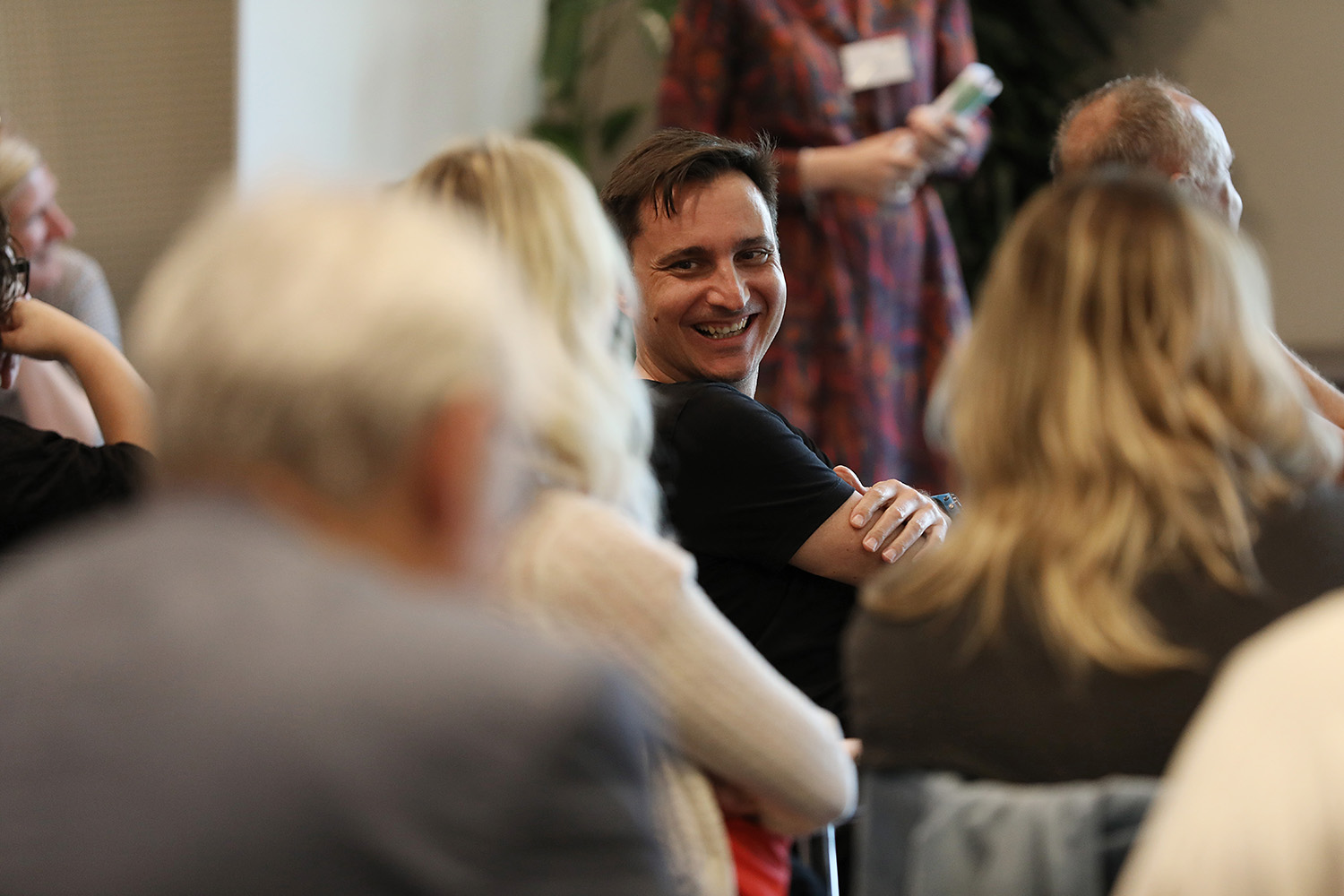
Participant in conversation with other delegates at the onsite visit in Copenhagen Denmark prior the start of the three-day visit. -
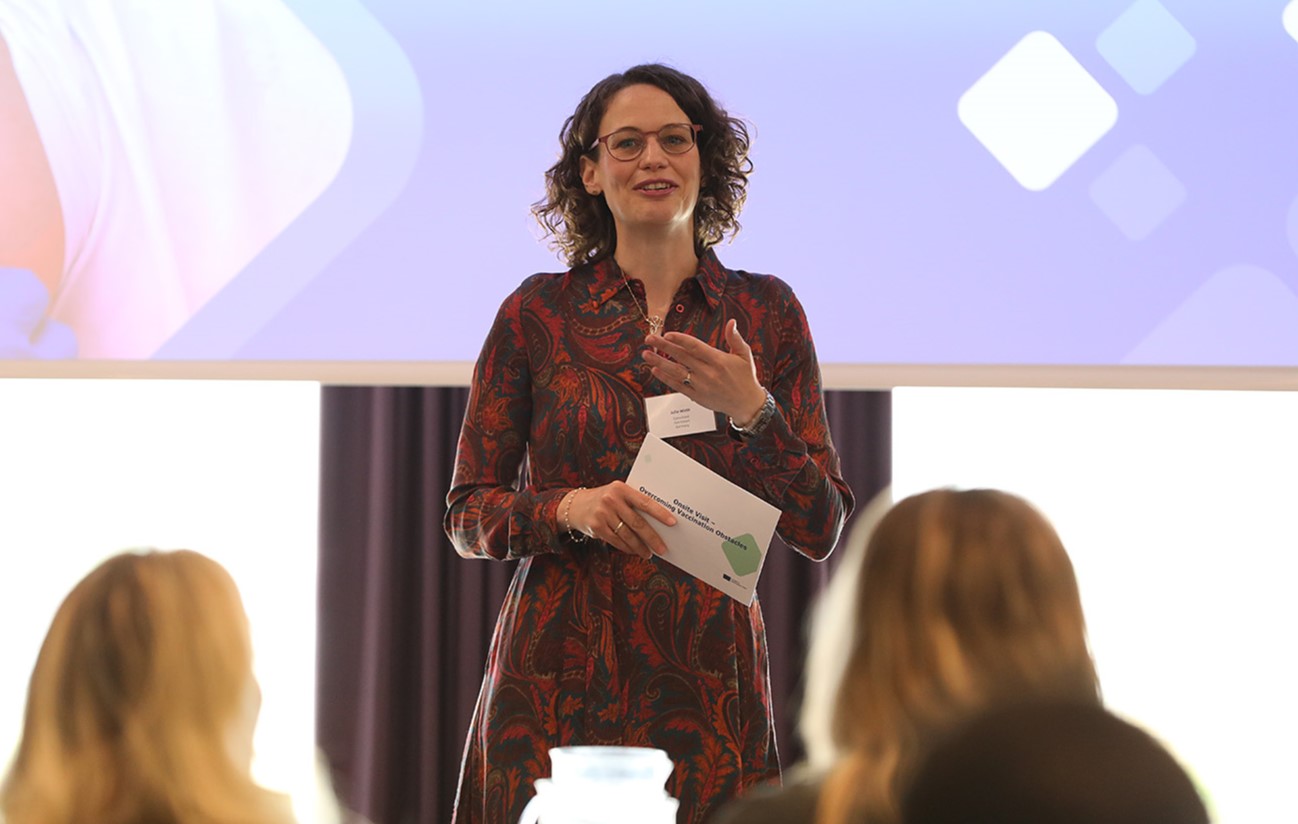
Julia Wirth, consultant from IfoK and part of the Overcoming Obstacles to Vaccination project team, begins the three-day onsite visit with an introduction session. -
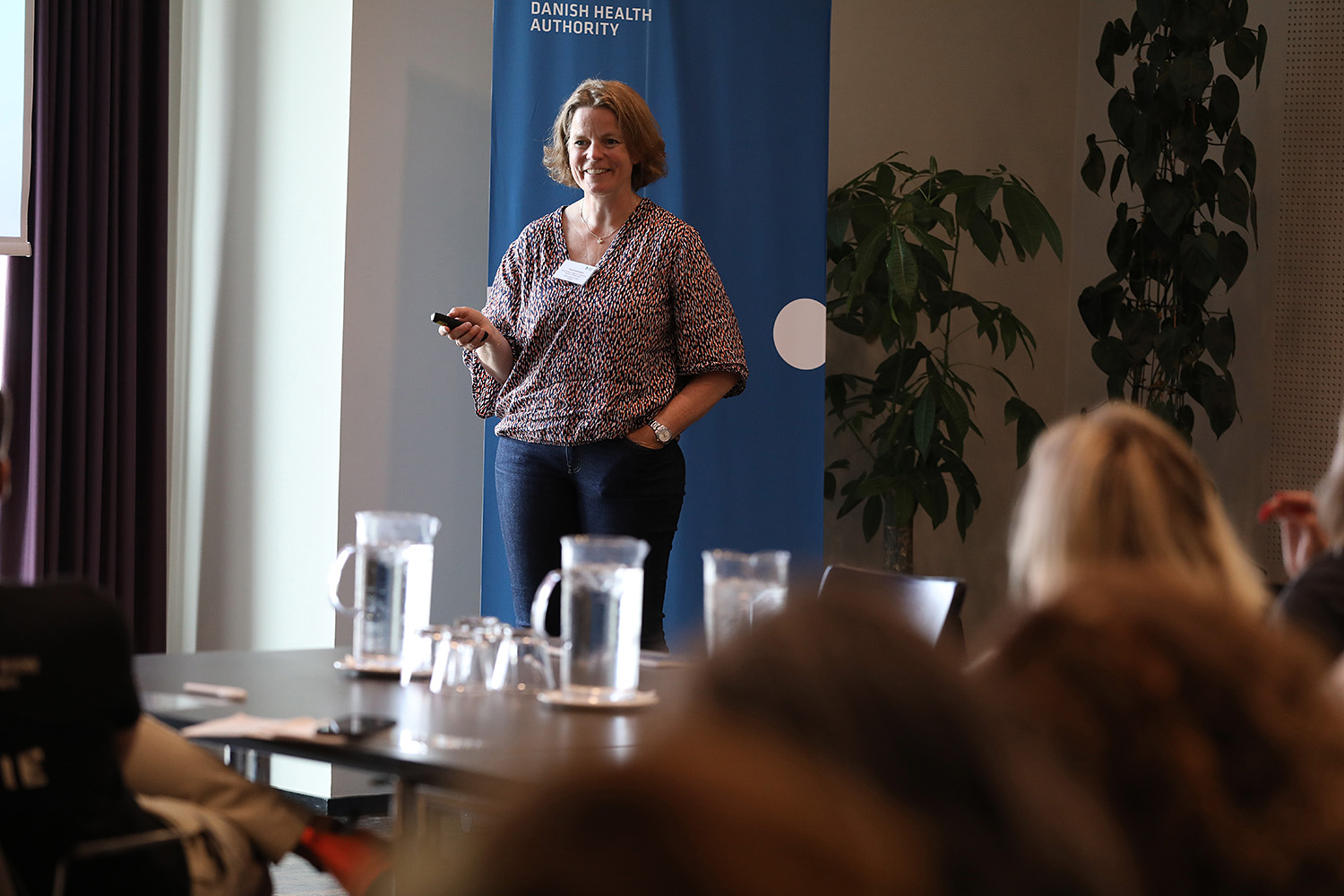
Presenter Kristine Moll Harboe, Deputy Director, Department of Infectious Diseases and Preparedness, Danish Health Authority provides an overview of the Danish Vaccination Programme during the onsite visit in Copenhagen Denmark. -
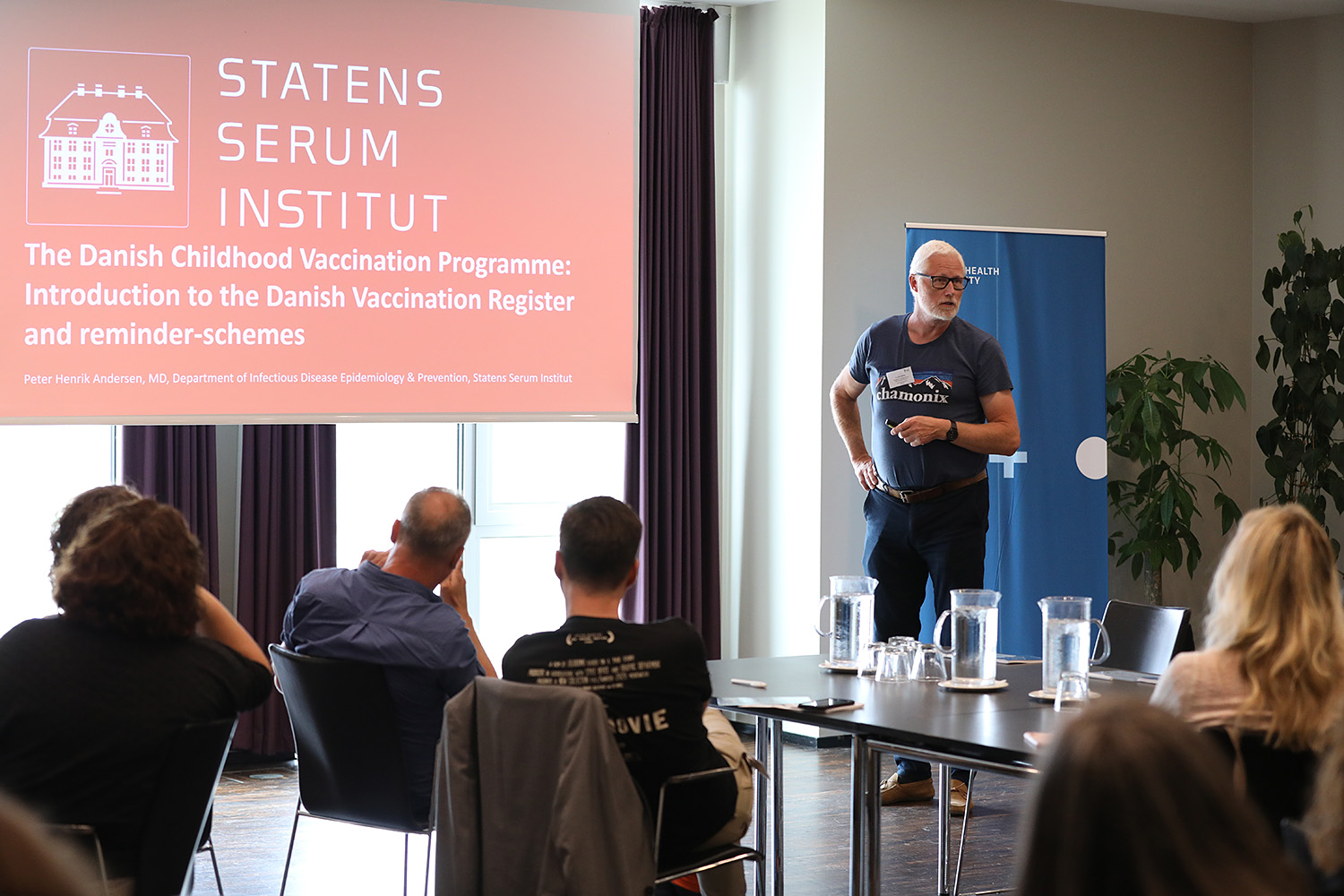
Peter Andersen, MD from the department of Infectious Disease Epidemiology & Prevention at Statens Serum Institut, providing an introduction to introduction to the Danish Vaccination Register and reminder-schemes as part of the onsite visit in Copenhagen Denmark. -
A participant at the onsite visit reading one of the handout leaflets used to help inform Danish citizens of the Childhood Vaccination Programme. -
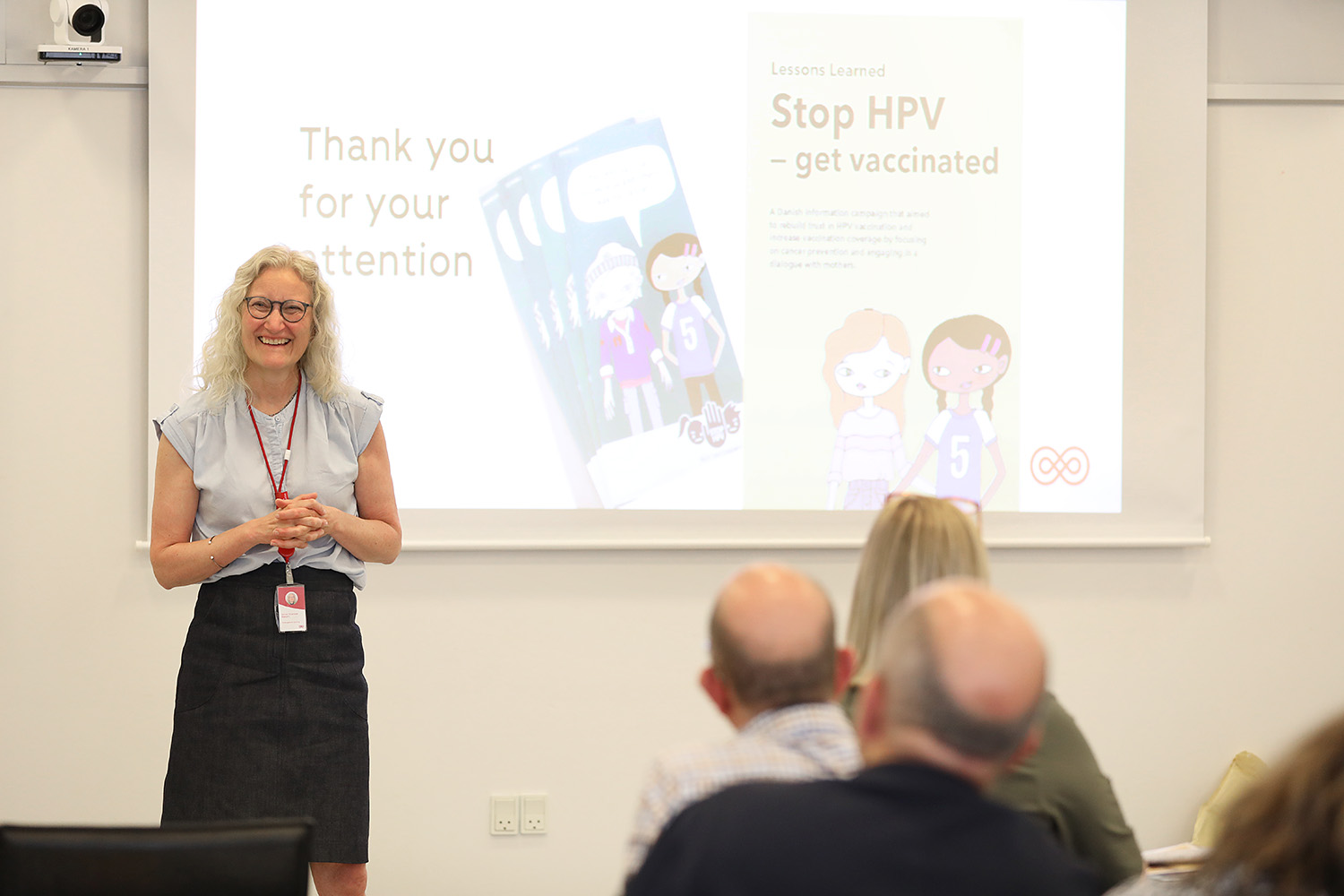
Speaker during the onsite visit in Copenhagen Denmark thanking everyone following the presentation on Childhood Vaccination Programmes. -
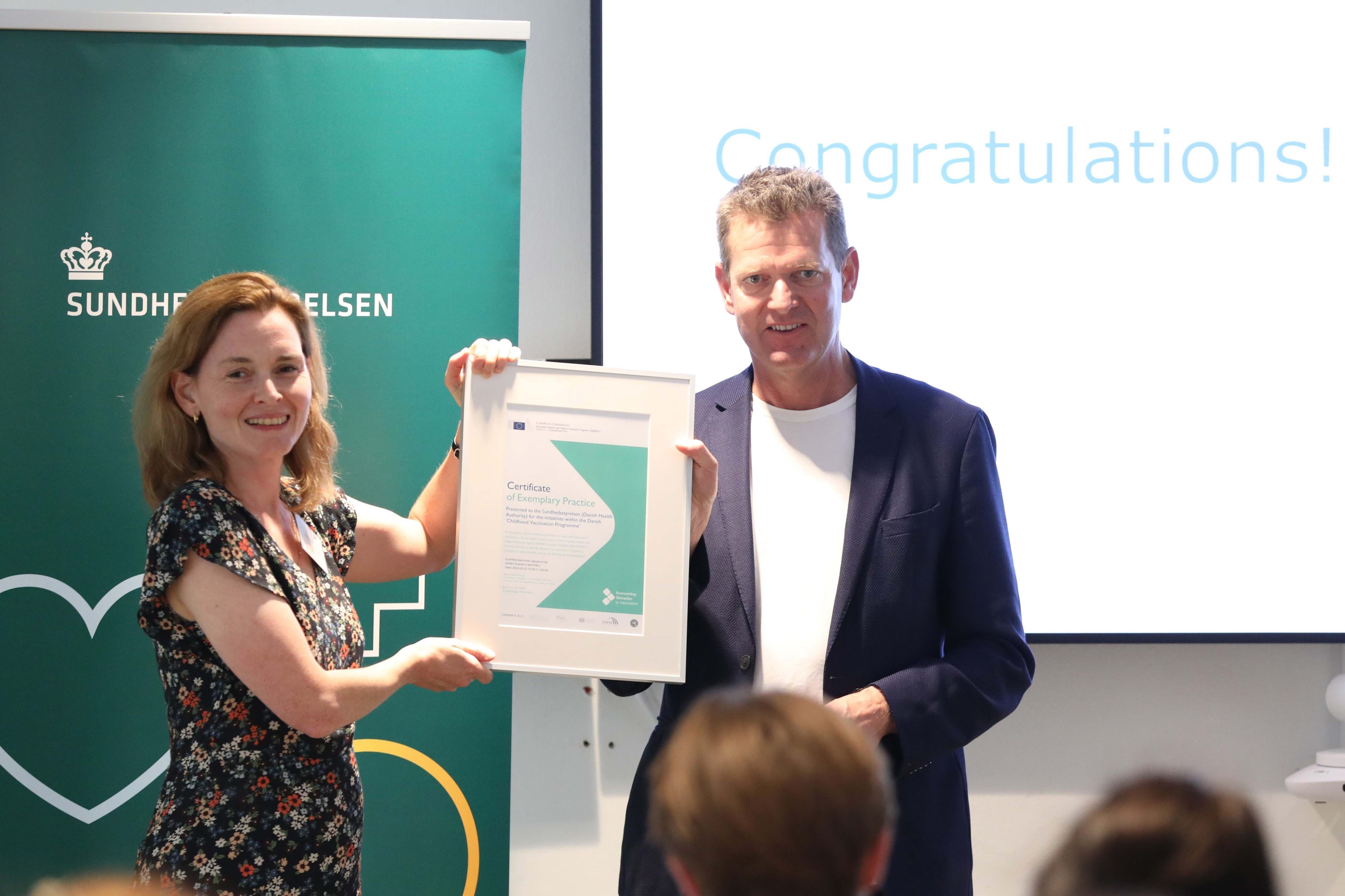
Martine Ingvorsen, Policy officer European Commission, DG SANTE, Disease Prevention and Health Promotion, presents a certificate of exemplary practice to Søren Brostrøm Director General, Danish Health Authority.
